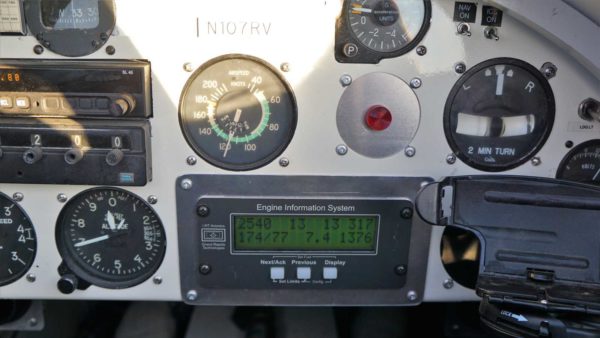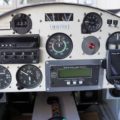If you recall, I mentioned the installation of a fuel flow sender in the RV-4 back in this post while I was working on the fuel level.
Since that post, I’ve gathered the bits I was missing and have done some work!
The fuel flow sensor is made by Electronics International and is the FT6- Fuel Flow Transducer. Also known as the “red cube.”
There are a few minor requirements for installing the red cube. All are pretty easy to accommodate in the RV-4. The major item is having straight fuel flow a few inches before the red cube and a few inches after.
With a bit of new fuel line and AN fittings, the red cube was quickly installed and leak tested.
It works!!
Here’s an in-flight photo to prove it!
On the “Engine Information System” instrument, the middle number on the bottom row is the fuel flow rate – 7.4 gallons per hour. Also new – the two number 13’s are the gallons remaining in the left and right fuel tanks. YAY!
Fully calibrating the fuel flow takes some time. Specifically, several tanks of fuel.
The process is to basically fill the tanks, do a bunch of flying, fill the tanks, do a bunch of flying, fill the tanks, do a bunch of flying, fill the tanks, do a bunch of flying, fill the tanks.
Simple!!
Actually, during this flying, you keep accurate track of the time flown and fuel added. At the end of this, some simple calcs are made, the EIS configuration updated and Voilà! An instrument that is able to accurately tell you how much fuel is being consumed.
Being a data junkie – I like that!!




Great work with the cool gadgets. I used a wood stick with lines I cut at known gallons, still would if I had a plane. I am not a fan of high tech in a cockpit…
Hope you enjoy many fun flights getting calibrated.
Thanks!! I agree, the dip stick works very well. My trouble is crawling out on the wing while enroute – my hair always gets messed up!! 🙂